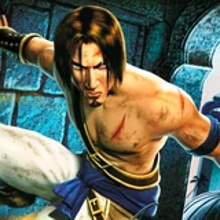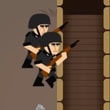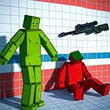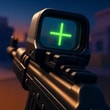🗡️ Footsteps in a Hall of Echoes
A corridor inhales. A torch flickers. Your boots answer with the softest tap—once, twice—and already the palace knows you’re here. Prince of Persia 2: The Shadow & The Flame is the kind of cinematic platformer that turns movement into drama: a single step matters, a late jump is a poem cut in half, and a sword drawn a heartbeat too soon writes your obituary in sand. You don’t mash; you measure. You don’t sprint; you commit. Every ledge asks a question. Every trap is a sentence with perfect punctuation—comma, dash, guillotine.
🏃♂️ Weight, Momentum, and the Art of Not Falling
This is a platformer with heft. You feel the wind-up before a leap, the skid at the edge of a loose tile, the tiny hang of gravity deciding whether you deserve the ledge. The run-up isn’t optional; it’s choreography. Tap into that two-step cadence—step, step, jump—and watch long gaps shrink. Feather the turn to reverse direction without losing tempo. Learn the prince’s low roll to glide beneath slicing blades and falling portcullises with a grin you didn’t plan. You’ll start counting tiles with your eyes, then with your bones. That’s when the palace stops scaring you and starts collaborating.
⚙️ Traps With Terrible Manners (and Great Timing)
Spike floors cough to life exactly when your heel passes. Guillotines clap like sarcastic applause. Pressure plates beg to be touched—then betray you with a collapsing bridge. The trick isn’t speed; it’s rhythm. Watch cycles, whistle a count, then move on the beat like a thief who took a dance class. Chain a hop to a catch to a pull-up and you’ll clear rooms that felt malicious five minutes ago. Miss the count and, well, the restart is fast and your pride grows back.
🛡️ Swordplay: Conversations at Blade’s Length
Duels are chess with footwork. Guards read your telegraphs and punish panic. Hold your ground, parry on the click of their wrist, riposte into the exposed rib of their rhythm. Aggressive foes demand compact defense; shielded brutes want you to bait a swing, backstep, and answer with a curt flurry. When two enemies bracket you, remember: spacing is a superpower. Slide one step to force single-file. On Kiz10 the inputs are crisp, so a clean parry feels like a door silently opening in a loud hallway—and you walking through without breaking stride.
🔥 Shadow, Flame, and the Taste of Old Magic
Under the marble and dust, something older moves. You’ll brush against talismans, vials, and shrines that hum like caught lightning. Magic doesn’t replace skill; it spotlights it. A flicker of flame brightens a path you were afraid to trust. A spectral echo of yourself hints at routes a living body can’t see yet. Timed invocations turn an impossible set piece into a narrow, glorious window you sprint through with a breath you didn’t know you were holding. Use them like instruments, not crutches.
🧩 Rooms That Teach Without Talking
Design here is patient and sly. Early chambers are tutorial in disguise: a low ceiling forces you to learn the roll, a short run-up proves that some gaps respect ritual, not bravery. Later sequences braid mechanics—plate, door, moving platform, crumble tile—into a sentence that looks long but speaks plainly once you hear its cadence. If you’re stuck, scan for negative space: a suspicious alcove, an off-color stone, a balcony that exists for no scenic reason. The palace rarely lies; it just whispers.
🌪️ Set Pieces Worth the Bruised Palms
Crumbling staircases ask for precise panic. Windy parapets convert patience into survival. A tower descent flips your instincts until down is the only honest direction. These scenes are stagecraft with teeth, each tuned to a specific flavor of fear—rush, restraint, or both at the same time. The best moments feel inevitable in retrospect: of course the only safe tile was two strides past the comfortable one. Of course the door was on a timer that demanded you trust your roll more than your eyes.
🎭 Enemies With Opinions
Not all guards are created equal. Nimble duelists feint; heavy captains bulldoze. Skeletal remnants ignore stabs that would fold ordinary ribs, asking for spacing, patience, and a greedy final jab. Occultists prefer distance, picking at your stride until you corner them and the equation changes. Each enemy is a small puzzle layered on top of the floor’s larger puzzle. Solve both or start again—mercifully fast, cheerfully unforgiving.
🧠 Micro-Tech That Saves Lives (and Time)
Edge-hang to bait a trap, then pull up when the cycle resets. Tap forward before a jump to clock the run-up without overshooting. Reverse direction mid-stride to kill momentum on a dime when a late “oh no” catches you. Roll through a falling gate to steal a cycle from fate. If a room looks hostile, walk it first—literally. The prince’s cautious, measured step keeps plates quiet and reveals which tiles are drama queens.
🎬 Cinematic Bones, Pixel-Sharp Feedback
The animation sells the stakes. A late reach for a ledge stretches your silhouette into suspense; a perfect landing settles with weight and relief you can feel in your shoulders. Sound design seals the contract: steel rings honest, stone grinds without melodrama, and distant roars put scale back into your tiny, urgent journey. You’ll start playing with your ears—the tick-tock of a trap, the scrape that means a door is still moving—because your eyes are busy being heroic.
🎮 Controls You Can Trust on Any Device
On desktop, WASD/arrow inputs translate into that famous run-step-jump cadence with surgical clarity; combat on a key or controller parry feels intentional, not lucky. On mobile, the left stick and a clean jump/attack layout keep timing tight—late rolls still save lives, early taps still betray them. Kiz10’s low-friction presentation makes the restart loop instant, which matters in a game that teaches by rhythm more than by tooltip.
🌐 Why Kiz10 Is the Smartest Gate in the Palace
Open, fall into a corridor, learn something in sixty seconds. That’s the promise—and Kiz10 keeps it. Quick loads, smooth input, clean focus on the scene. When a section bullies you, you’re back at the start before your frustration remembers its script. When you nail a sequence, the platform steps aside and lets the “I did that” glow linger. Then it quietly dares you to do it again, faster, cleaner, braver.
📝 Etiquette of Survival (from Future You)
Count tiles before you commit. If a room feels mean, it’s testing patience, not reflex. Keep your blade sheathed while scouting—fewer accidental lunges into lowsaws. Let failures be notes: “ran too early,” “rolled too late,” “didn’t trust the two-step.” And remember the golden rule of this series: momentum is a promise you make to yourself; honor it and the level honors you back.
🏁 The Door That Opens Because You Earned It
There’s a run where everything aligns. You hit a plate, sprint the exact number of strides the corridor deserves, hop a pit on the last friendly pixel, roll beneath a descending gate with your nose an inch from brass, rise into a duel that ends in three tidy beats—parry, pause, punish—and slide through a door that once closed in your face a dozen times. For a second, the palace feels like it’s rooting for you. Then it remembers itself and sharpens the next corridor. Good. You’re ready.
 Rubi and Sephir
Rubi and Sephir













































